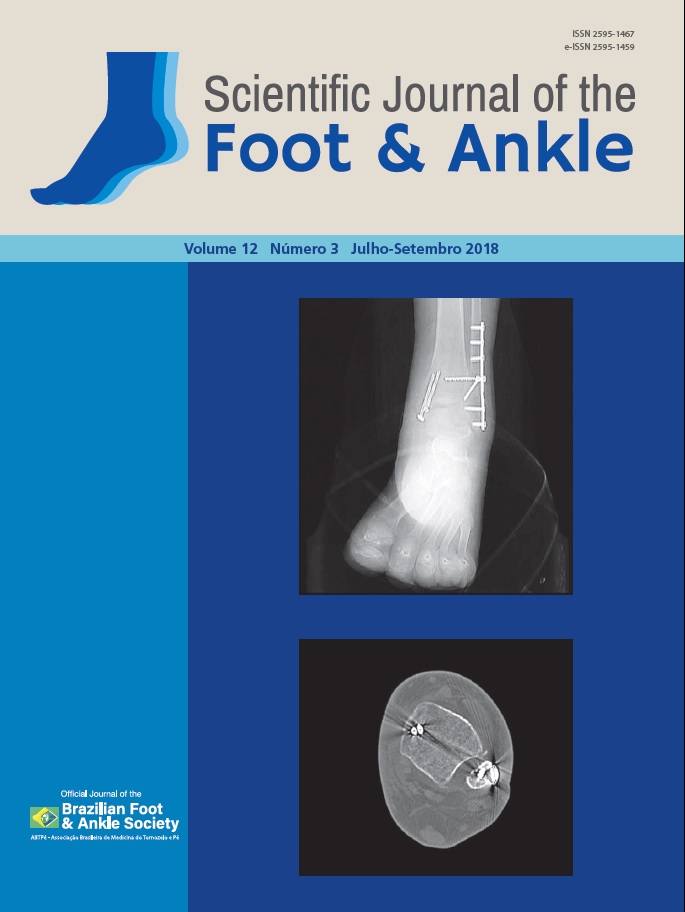Técnica de Reverdin-Isham com e sem fixação
resultados preliminares
DOI:
https://doi.org/10.30795/scijfootankle.2018.v12.813Palavras-chave:
Hallux valgus/cirurgia, Procedimentos cirúrgicos minimamente invasivos, Osteotomia/métodosResumo
Objetivo: O objetivo deste estudo foi avaliar radiograficamente e através do escore AOFAS os resultados da técnica de tratamento para hálux valgo minimamente invasiva percutânea de Reverdin-Isham tradicional comparada à proposta de modificação por osteossíntese adicional com um parafuso canulado. Métodos: Avaliamos retrospectivamente 22 pés, em 15 pacientes com hálux valgo leve a moderado, pois todos foram submetidos a tratamento cirúrgico conforme técnica de Reverdin-Isham. Em 11 pés foi adicionada fixação com parafuso canulado de 2,4 ou 2,7mm. Os procedimentos foram realizados de janeiro de 2014 a junho de 2016 por um único cirurgião ortopédico. Foram avaliados através de radiografias o ângulo metatarso-falângico e ângulo intermetatársico e aplicado escore da American Association Orthopaedic Foot and Ankle Society (AOFAS) antes da cirurgia e com 90 dias após o procedimento. Resultados: Houve melhora nos parâmetros avaliados em ambos os grupos, com diferenças significativas no seguimento pré e pós procedimento. Não houve diferença estatística entre os grupos em relação à fixação, porém os resultados foram levemente superiores no grupo em que foi empregada osteossíntese. Conclusão: O procedimento de Reverdin-Isham é eficaz e seguro para correção de hálux valgo leve a moderado e a fixação adicional apresenta resultados promissores, embora sem diferença estatística. Entretanto são necessários mais estudos, com maior população e seguimento mais longo para definir seu papel no âmbito global do tratamento. Nível de Evidência IV; Estudos Terapêuticos; Série de Casos.




